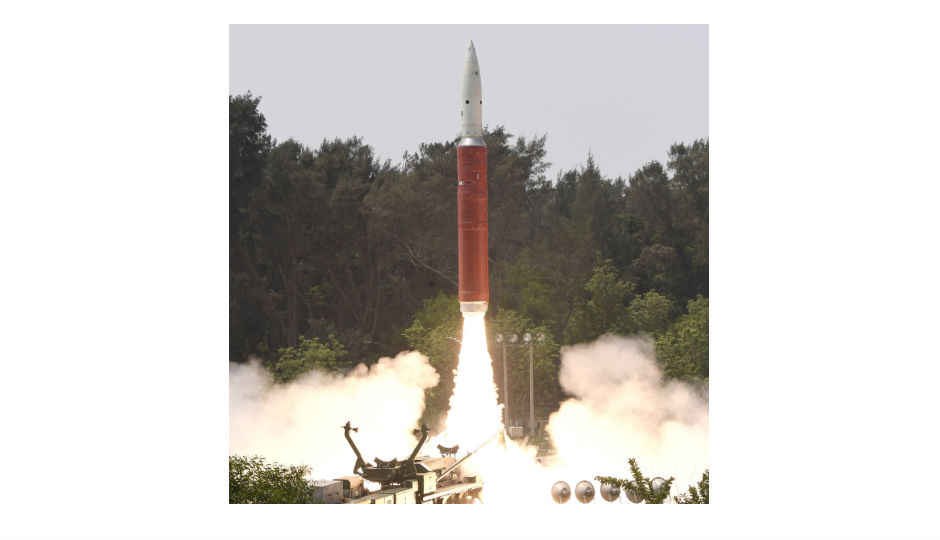Indian ASAT demonstration criticised by NASA, 400 pieces of space debris threaten ISS
 Highlights: NASA Head denounces India's ASAT launch Says International Space Station at risk of collision Space debris from India's ASAT mission has reached above the apogee of the ISS Last week, India, for the first time, demonstrated its ability to destroy low orbit satellites using an anti-satellite weapon. Deemed Mission Shakti, India flexed its defence muscles becoming the fourth nation in the world to demonstrate ASAT capabilities. However, the move has since attracted a lot of criticism from space scientists and other industry stakeholders because of the space debris produced when the defunct satellite was destroyed. In a fresh round of reprovals, NASA head Jim Bridenstine has denounced India’s ASAT mission and has revealed that the destruction of the satellite resulted in 400 pieces of space debris, risking the safety of the International Space Station (ISS) and the astronauts that reside within it. Addressing NASA employees days after India’s ASAT launch, Bridenstine said, “What we are tracking right now, objects big enough to track — we're talking about 10 centimeters (six inches) or bigger — about 60 pieces have been tracked.” Even though the Indian satellite was destroyed at a low altitude of 300 Km, below the ISS’ altitude of 408 Km, Bridenstine said that around 24 pieces of debris created by the ASAT system are flying above the apogee of the ISS. The NASA head called the event a “terrible, terrible thing” because of the debris flowing above the ISS. “That kind of activity is not compatible with the future of human spaceflight," he noted. Bridenstine even went to the length of calling the exercise “unacceptable”. Previously, a Chinese ASAT test created 3,000 pieces of space debris at 852 Km from the surface. Now, because of India’s demonstration, the risk of space debris collision with the ISS has gone up by 44 percent over 10 days. This risk is expected to lower once the space debris burns up on its entry into the atmosphere. Meanwhile, US Strategic Command’s Joint Force Space Component Command (JFSCC) is actively tracking the debris produced by India’s satellite destruction. On March 29, US Air Force Space Command Commander Lt Gen David D Thompson told lawmakers in the US that the debris posed no threat to the ISS. However, over time the debris seems to have gone up higher, creating the current risk exposed by the NASA chief. Indian lawmakers and the Defence Research and Development Organization (DRDO) are yet to respond to NASA’s comments.
Highlights: NASA Head denounces India's ASAT launch Says International Space Station at risk of collision Space debris from India's ASAT mission has reached above the apogee of the ISS Last week, India, for the first time, demonstrated its ability to destroy low orbit satellites using an anti-satellite weapon. Deemed Mission Shakti, India flexed its defence muscles becoming the fourth nation in the world to demonstrate ASAT capabilities. However, the move has since attracted a lot of criticism from space scientists and other industry stakeholders because of the space debris produced when the defunct satellite was destroyed. In a fresh round of reprovals, NASA head Jim Bridenstine has denounced India’s ASAT mission and has revealed that the destruction of the satellite resulted in 400 pieces of space debris, risking the safety of the International Space Station (ISS) and the astronauts that reside within it. Addressing NASA employees days after India’s ASAT launch, Bridenstine said, “What we are tracking right now, objects big enough to track — we're talking about 10 centimeters (six inches) or bigger — about 60 pieces have been tracked.” Even though the Indian satellite was destroyed at a low altitude of 300 Km, below the ISS’ altitude of 408 Km, Bridenstine said that around 24 pieces of debris created by the ASAT system are flying above the apogee of the ISS. The NASA head called the event a “terrible, terrible thing” because of the debris flowing above the ISS. “That kind of activity is not compatible with the future of human spaceflight," he noted. Bridenstine even went to the length of calling the exercise “unacceptable”. Previously, a Chinese ASAT test created 3,000 pieces of space debris at 852 Km from the surface. Now, because of India’s demonstration, the risk of space debris collision with the ISS has gone up by 44 percent over 10 days. This risk is expected to lower once the space debris burns up on its entry into the atmosphere. Meanwhile, US Strategic Command’s Joint Force Space Component Command (JFSCC) is actively tracking the debris produced by India’s satellite destruction. On March 29, US Air Force Space Command Commander Lt Gen David D Thompson told lawmakers in the US that the debris posed no threat to the ISS. However, over time the debris seems to have gone up higher, creating the current risk exposed by the NASA chief. Indian lawmakers and the Defence Research and Development Organization (DRDO) are yet to respond to NASA’s comments.from Latest Technology News https://ift.tt/2VawCsp

No comments